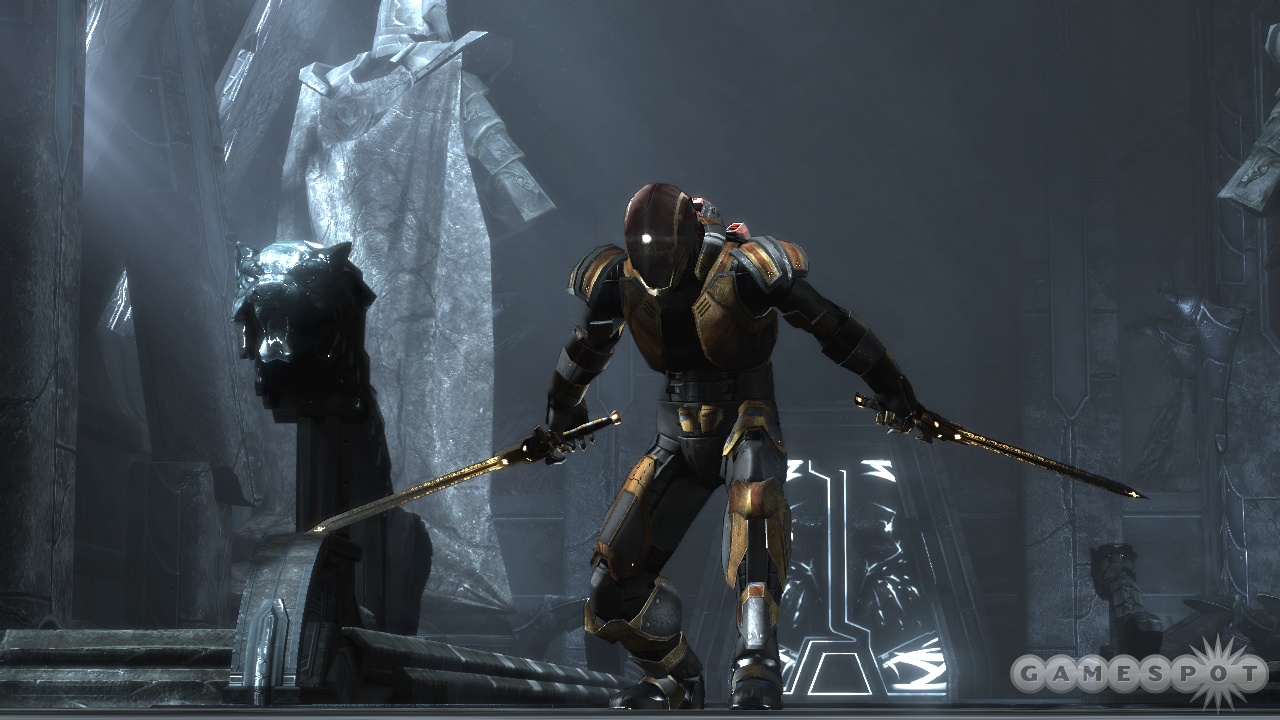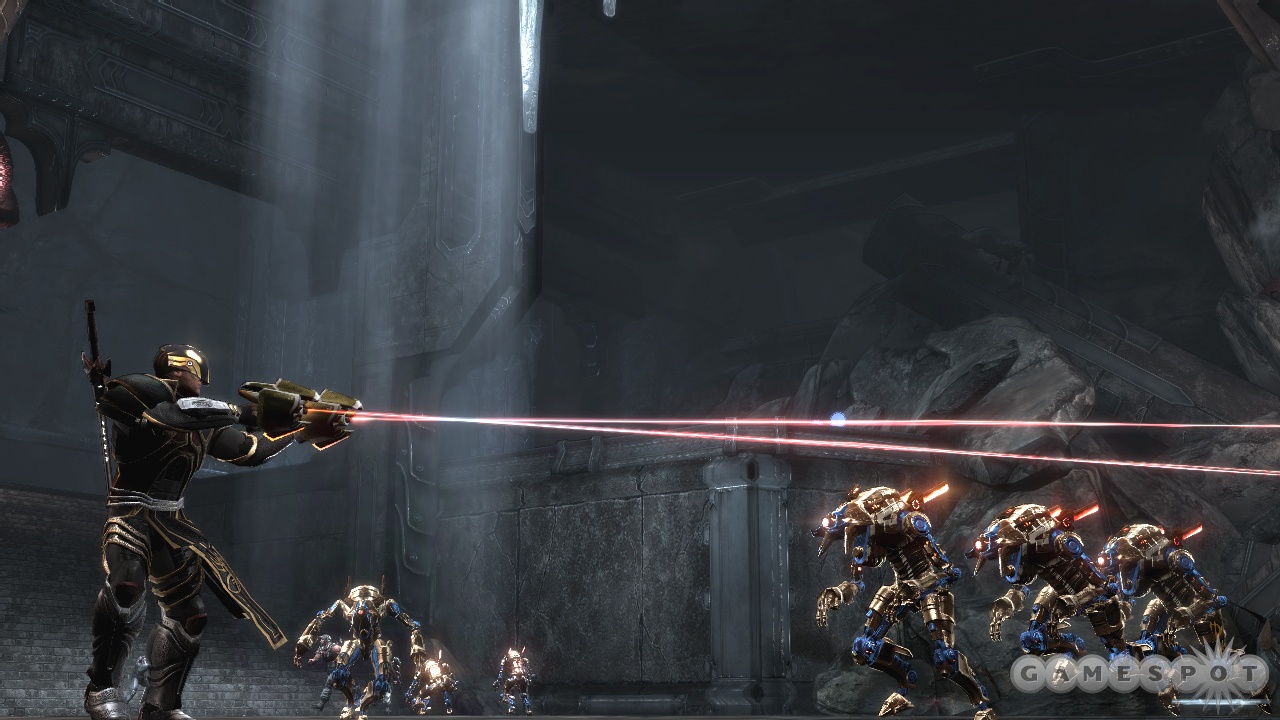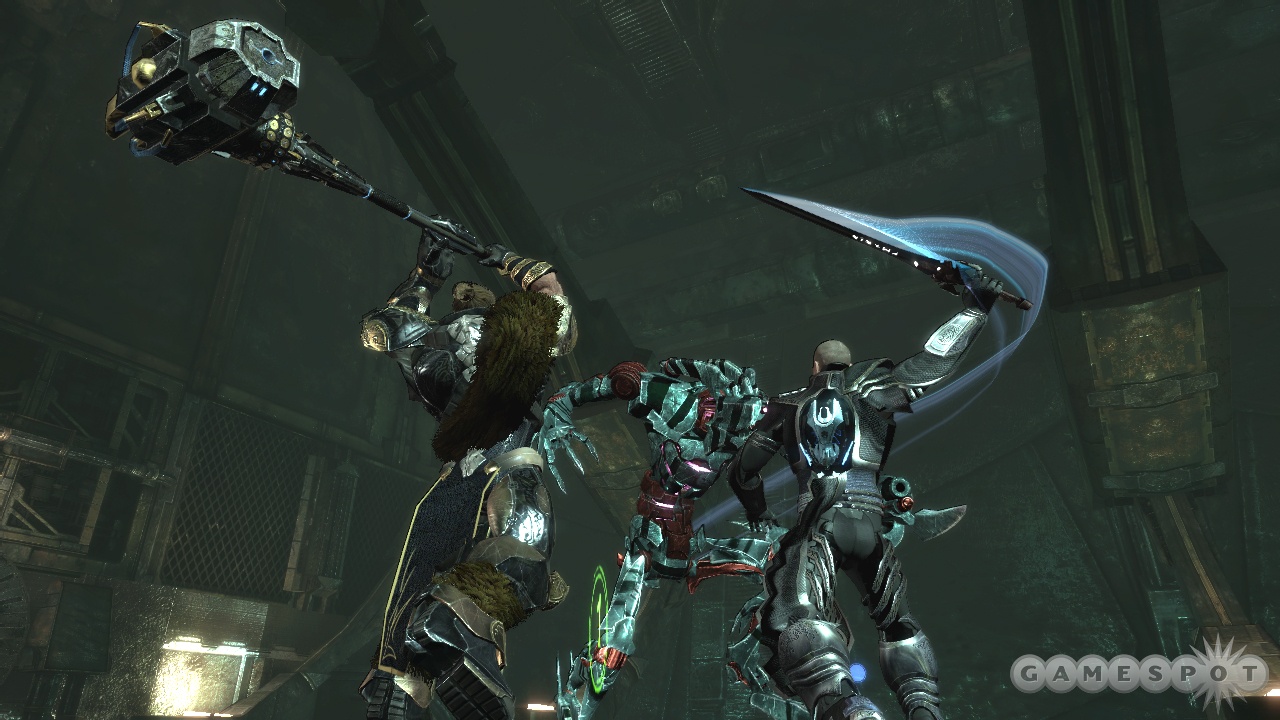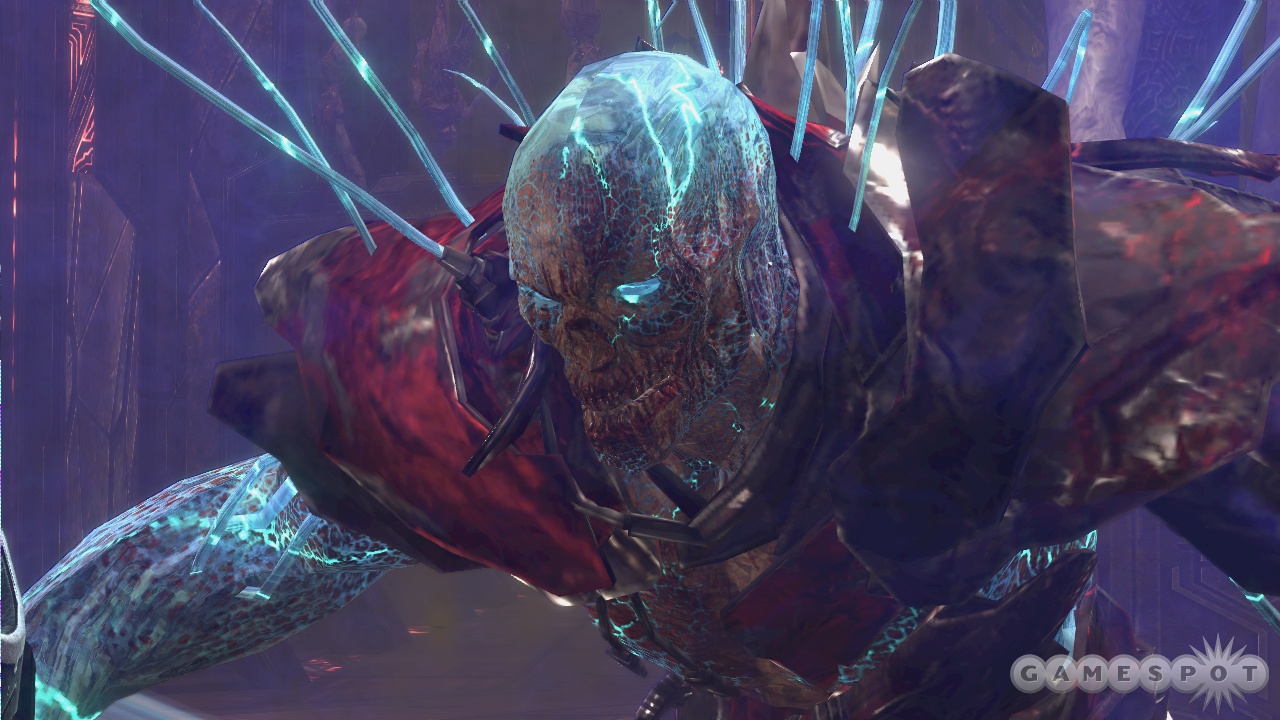Too Human Hands-On - Not Just an Action Game
We pay a visit to Silicon Knights and find out that there's much more to Too Human than just fast-paced action.
Currently scheduled for release in 2008, the first installment of Silicon Knights' Too Human trilogy is "one of the most misunderstood games in the industry," at least according to Denis Dyack, the developer's founder and president. We had an opportunity to visit Silicon Knights' Canadian office earlier this month, and after spending a couple of hours with a work-in-progress version of Too Human, we can report that Dyack is, or at least was , right. Nothing that we've been allowed to see of Too Human previously led us to believe that it would be anything other than a fast-paced, single-player action game, but we now know that simply isn't the case.
For starters, Too Human will be very much story-driven, and without wishing to give too much away, those of you who dig Norse mythology (albeit with a sci-fi twist) are in for a real treat. Those of you who enjoy role-playing games with an emphasis on loot collection should also find plenty that appeals in Too Human because based on what we saw of the game's loot system, it's going to be every bit as robust as those found in many massively multiplayer online games, including World of Warcraft. Furthermore, Too Human will support cooperative play, and although we're not certain how many players can team up to play through the campaign, we can confirm that there will be five different character classes from which to choose.

If you've been following our previous coverage of Too Human, you'll know that the game's protagonist is Baldur, an acrobatic warrior who's every bit as skilled with his sword as he is with firearms. However, the Baldur featured in trailers and such isn't necessarily the same Baldur that you'll be playing as--that's just what you might look like if you choose to play as a champion. The champion class is a jack-of-all-trades whose only specialization is aerial combat--the ability to "juggle" enemies and keep them up in the air using repeated attacks. Other character classes on offer will include the commando, who specializes in ranged weapons and explosives; the berserker, who can dual-wield melee weapons and dole out massive damage; the defender, who can carry a shield with a one-handed melee weapon and "tank" in group situations by drawing agro away from other players; and the bio-engineer, who's a healer, as well as a fighter. Additional character classes will purportedly be made available for download via Xbox Live post release, but nobody at Silicon Knights is talking about those just yet.
After opting for the commando class, we jumped straight into a single-player game. We found that it took a little getting used to some of the controls and gameplay mechanics. As a commando, our main weapon was an automatic rifle with a grenade launcher, and oddly, the two very different projectiles came from the same ammunition pool. Furthermore, although the size of the weapon's ammo clip was quite limited, our bullet-and-grenade resource was infinite, so the only real challenge with ammo was to make sure we reloaded at every opportunity and didn't end up fumbling with our weapon in the middle of a firefight. Unsurprisingly, our commando's main weapons didn't fare too well when enemies got up close and personal, so we were relieved to learn that the huge polearm on his back wasn't just for show.

Because the camera positions in Too Human are more or less locked, the right analog stick is available to serve a far greater purpose: melee-attacking enemies in any direction. With a well-timed double-tap, you can launch enemies into the air where they're helpless and can be juggled with subsequent projectile attacks. Incidentally, the right analog stick is also used to move your crosshair between targets when using ranged weapons, and we found that the system worked very well once we'd spent a little time with it. In fact, our commando proved to be a great choice as he destroyed wave after wave of incoming enemies with well-placed grenades, and we'll be very surprised if the class hasn't been made a little less powerful once the game is finished. With that said, we should mention that we were extremely lucky with some of the drops that we were getting from slain enemies, and our commando was barely recognizable as the same character that we'd started out with after about an hour of play.
If you're familiar with the loot/drop systems in MMO games and action role-playing games, such as Diablo II, you'll have a reasonable idea of what you can expect from Too Human. Many of the enemies that you kill--most of which are robotic variations on classic fantasy goblins, dark elves, and the like--will drop weapons, armor pieces, or item blueprints for you to collect. Items are color-coded according to their rarity, and unsurprisingly, the most powerful items in the game are those that drop the least frequently. The rarest and most powerful items in Too Human can only be obtained by collecting a blueprint for their design from an enemy then spending a significant amount of money on having the item crafted. In the finished game, you'll only be able to craft items in between levels, but in the demo version that we were playing, we were able to do so at any time.
We're told that there will be "thousands" of different weapons and armor pieces to collect in Too Human. If you're the kind of player who (like us) gets a real kick out of getting your hands on the best gear, you'll be pleased to learn that the loot table will include extremely rare epic items that afford you bonuses when you have all six matching armor pieces, for example. Some items can also be augmented with runes to afford you attribute bonuses on top of those already offered by the weapon or armor piece when you find it. For example, one of the epic-class weapons that we got our hands on had three empty slots for runes, so we wasted no time applying some of the runes that we'd found to it for bonuses, such as better loot drops, increased attack power, and faster reload times. In addition to the six different pieces of armor, Too Human's items include nine different classes of melee weapon and nine different classes of ranged weapon, so the odds of you running into a doppelganger when playing online are very slim indeed.

The first game in the Too Human trilogy will cap your character's level at 50 (you'll use the same character in subsequent games), and as you level up, you'll earn points that can be spent in one of the three skill trees of your chosen class. In case you're not a World of Warcraft player already familiar with a similar system, that basically means that within your class, you can choose to specialize in one of three specific fields. For example, as a commando, our options early on included spending points to increase the range of our rifle or to make our grenades more powerful. Later in the game, you'll also have the option to improve your characters with cybernetic implants, though we got the distinct impression from one or two of the developers that there will be some kind of price to pay for choosing mechanical parts over those parts with which you were born.
Another interesting feature of Too Human that we got to see for the first time during our visit to Silicon Knights was cyberspace. The bulk of Too Human's campaign takes place in different regions of a world known as Aesir, with such names as The Ice Forest, Hall of Heroes, and Realm of the Undead. The gameplay in those locales is combat-based, but occasionally, you'll come across pools of water that can be used to travel to cyberspace versions of the same places. Whereas Aesir's locales all have a very cold futuristic look to them, the cyberspace areas feel much warmer and more natural with plenty of greenery. The gameplay in cyberspace will be mostly exploration-based, and by performing simple tasks in cyberspace, you'll be able to unlock otherwise impassable doors on Aesir.

At this point, we're considerably more excited for Too Human than we were prior to our trip to Canada, but there's still an awful lot that we don't know about the game. For example, will players of radically different levels feasibly be able to play through the campaign together? Will groups need a healer and a tank to stand a chance of succeeding against enemy bosses? We look forward to bringing you the answers to these questions and a whole lot more in the not-too-distant future.
Got a news tip or want to contact us directly? Email news@gamespot.com
Join the conversation